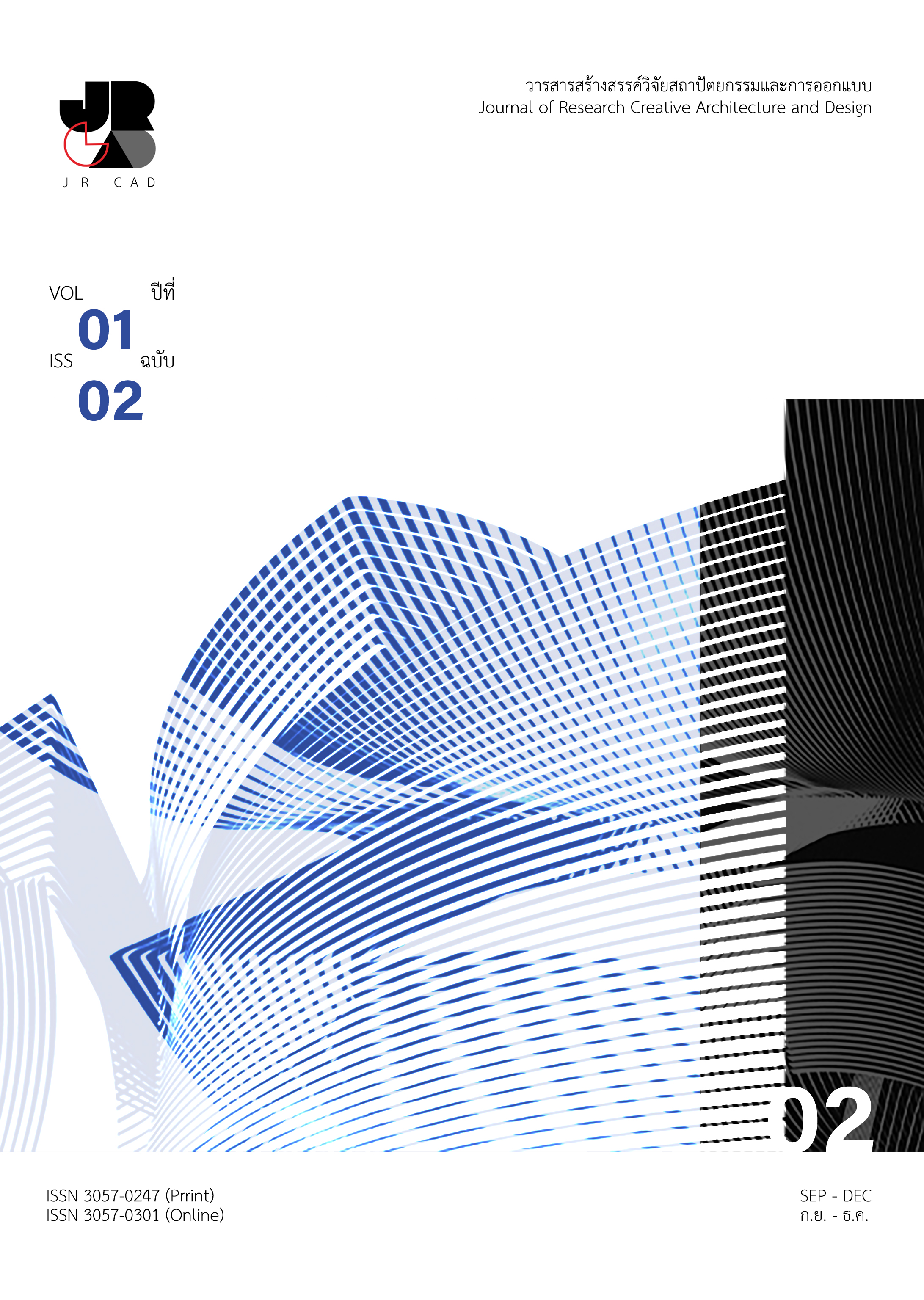A Feasibility Study of Bricks Producing for Construction Based on Dan Kwian Soil Mixed Biomass Materials การศึกษาความเป็นไปได้ในการผลิตอิฐมอญสำหรับงานก่อสร้างโดยใช้ดินด่านเกวียนที่มีวัสดุชีวมวลเป็นส่วนผสม
Main Article Content
Abstract
This research aims to develop a process for producing clay bricks from Dan Kwian clay with a mixture of biomass waste including coffee and bagasse from the starting point of agricultural and food waste, which are the main industries of the country by the Line Blend theory. The mixing ratio design is divided into 3 factors (Factor 1: coffee grounds and Dan Kwian soil; Factor 2: tea, bagasse and Dan Kwian soil; Factor 3: coffee grounds, bagasse and high-performance Dan Kwian soil. There are 93 more formulas). The temperatures used to burn the clay samples were 900, 1,000, and 1,100 degrees Celsius. The clay bars are tested for mechanical and physical properties by determining the percentage of firing shrinkage, percentage of water absorption and compressive strength. The experimental results revealed that a mixture ratio of 2% coffee grounds and 98% Dan Kwian clay, fired at a temperature of 1,000 degrees Celsius is most suitable for brick production. This is due to its optimal properties, including a shrinkage rate after firing of 10%, a density of 1,481.29 kg/m³, a water absorption rate of 16%, and a compressive strength of 4.30 MPa. This mixture can be utilized in the brick production process in compliance with TIS 153-2565 standards for non-load-bearing hollow bricks and Community Product Standards (CPS) 601/2547 for clay bricks. The research findings can be applied to most clay brick production processes in the country, promoting sustainable construction material production. Additionally, it benefits the environment by recycling a large volume of waste materials, yielding cost-effective returns and efficient resource utilization.
Article Details

This work is licensed under a Creative Commons Attribution-NonCommercial-NoDerivatives 4.0 International License.
บทความที่ได้รับการตีพิมพ์เป็นลิขสิทธิ์ของคณะสถาปัตยกรรมและการออกแบบ มหาวิทยาลัยเทคโนโลยีพระจอมเกล้าพระนครเหนือ


